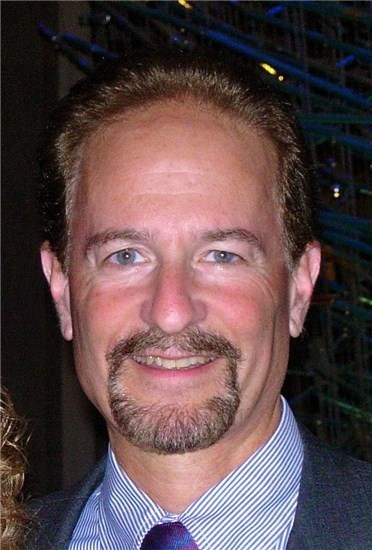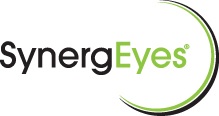By Alan Berman, OD
July 29, 2015
Seventh article in the series “Differentiating Your Practice”
SYNOPSIS
Athletes (and weekend warriors) have unique vision needs. An advanced-technology hybrid contact lens can help to improve their sports performance.
ACTION POINTS
DEVELOP YOUR NICHE. Differentiate your practice by identifying a specialty that leverages your strengths as an optometrist and meets the unique needs of your patient base.
GUTS NOT GLORY. Every practice has weekend warriors who strive for peak performance in sports. They have the same high demands for visual performance.
PROVIDE CRISP, STABLE VISION. Athletes demand it all: comfort and crispness—and stability, which hybrid CLs provide. Tell them about it and deliver it.
I was an athlete in high school, and when I became an optometrist, it seemed only natural to focus a lot of my work on meeting the unique visual needs of athletes. My practice, Ridgefield Family Eye Care, has been working with professional and collegiate athletes in our area for more than 40 years. However, our bread and butter, so to speak, has been serving the needs of the weekend athlete, the everyday patient who likes to play golf or tennis once or twice a week.
Regardless of the patient’s level of sports performance, we feel that there are certain ways to evaluate their vision in order to maximize their performance out on the field. In our view, performance all starts with vision, and we have a two-hour work-up for athletes to evaluate all areas of visual performance. This starts with a routine eye exam, and it also includes an assessment of the patient’s eye tracking and focus ability. We also evaluate their eye-hand coordination and depth perception, among other visual skills.
About SynergEyes…
SynergEyes® is a world leader in the specialty contact lens market, focused on developing and delivering advanced-technology, high-performance vision products that transform vision for patients with astigmatism, presbyopia and irregular cornea conditions. The company offers a range of hybrid contact lenses that promote eye health while providing GP vision and soft-lens comfort.
SynergEyes is focused exclusively on the leading independent eye care professionals and offers unique opportunities for increased patient satisfaction, practice differentiation and a recurring revenue stream. Products include Duette® and Duette® Progressive for astigmatism and presbyopia, and UltraHealth® and UltraHealth FC for irregular corneas, as well as SynergEyes A, MF, KC, and PS and ClearKone®.
More information is available at: www.synergeyes.com/professional
Through this comprehensive analysis, we identify their visual strengths and weaknesses and create a solution for them that might include “sports vision training,” contact lenses or protective eyewear.
When we are prescribing contact lenses for athletes, we consider:
1. What is the athlete’s playing environment like? Are they playing indoors or outdoors? What is the overall environment like? Is there wind? Dust? Sun? Humidity? What are the oxygen conditions? Are they at high altitude? All of these factors can influence their visual performance.
2. What are the visual characteristics of the athlete’s sport? Do they need optimal peripheral vision or are they looking straight ahead?
3. What position are they playing? Are they the quarterback or a lineman? Will they be in an awkward position during play that might affect the stability of the lens?
4. What are the physiological characteristics of their eyes? How is their tear quality? Their lid positioning? Their pupil size? How might their correction or prescription affect the choice of lens?
Challenge: Astigmatism and CLs
Athletes with astigmatism present perhaps the biggest challenge when it comes to fitting contact lenses. In general, gas permeable lenses offer the best visual benefits; however, they are not recommended for sports because athletes tend to move around a lot. There are issues with lens stability, plus athletes are aware of a hard contact lens in their eyes, which can be distracting, and dust and debris can also get under a hard contact lens, which is obviously an issue.
In our practice, we have tried all of the soft toric contact lens designs, and we feel the hybrid design, such as Duette from SynergEyes, provides the most stable vision for patients with a moderate amount of astigmatism or more. With the hybrid design, you get best of both worlds: the comfort of a soft lens, but the visual benefits of a gas permeable aspheric design. The hybrid’s soft skirt prevents dust and debris from getting under the lens and helps keep the lens stable, even when an athlete is moving around. The gas permeable optic zone provides excellent optics. Plus, these lenses offer UV protection, which is obviously essential for athletes.
We fit a 16-year-old baseball player with the hybrid lens and had great success. He had 2.00D of off-axis astigmatism in each eye, and his vision was really affecting his performance, particularly when he was hitting. We had tried a number of soft torics with him, and we just couldn’t find a lens that was stable for him. After a week in the hybrid lens, though, his vision improved significantly. His batting average improved, and so did his overall confidence. His mother came in and told us that he was not only doing better on the field, but in the classroom as well, which is really gratifying.
High-order aberrations (HOAs) present a unique challenge for astigmatic athletes, particularly those who play sports at night. We have a number of high school and college football and baseball players in our practice who have had issues with HOAs.
HOAs can produce vision errors that can make seeing at night difficult, such as glare, halos, blurring and starburst patterns under the lighting. These aberrations can affect contrast sensitivity and depth perception. Patients with larger pupil sizes generally have more problems with vision symptoms caused by HOAs, particularly in low lighting conditions when the pupil opens even wider.
HOAs can be difficult to correct in a contact lens due to the variability of pupil sizes under different lighting conditions and an individual’s unique prescription. The challenges with using the patient’s unique wavefront profile to create custom contact lenses include rotational stability and the ability to stabilize that lens.
The aspheric shape is designed by SynergEyes specifically to optimize the patient’s correction, based on the patient’s unique corneal shape and prescription. The key to optimizing vision and contrast sensitivity with the Duette, is to design or modify the lens to maximize centration on the cornea. This can be accomplished by making changes in the skirt and/or the base curve of the lens.
The Duette lens’ aspheric optics optimizes vision, providing greater depth of focus, even in low illumination, which can help optimize athletic performance under the lights. Lens rotation does not affect the wearer’s vision, and the hybrid platform offers stability and centration, which can enhance contrast sensitivity, a very important skill for optimum sports performance.
Sports vision: potential for practice growth
Sports vision is a niche that has wonderful potential to grow an optometry practice, but eyecare professionals who are looking to move into this area have to be willing to expand their knowledge of the unique visual aspects of sports, the proper evaluation of the visual needs of athletes and the technology available to address the vision-care needs of athletes. Even with unique products such as the hybrid Duette lens, they need to be able to educate athletes on how to achieve optimal results, and they need to be able to explain that the fitting process may require a few follow-up visits in order to fine-tune the fit. There may also be an adaptation issue, particularly if you are fitting a progressive contact lens, and optometrists need to be able to counsel athletes through this process.
But if it’s done right and done well, you’ll find that a sports vision practice will be a great source of referrals. If you can make athletes more comfortable on the playing field, they will tell their friends, teammates and coaches, and you will have patients coming into your practice who will see that not only do you treat athletes, but you can address all sorts of eye health issues as well.
There’s no better marketing than that.
Alan Berman, OD, is a partner in Ridgefield Family Eye Care, as well as the co-director of the Institute for Sports Vision in Ridgefield, Conn. He is a member of the American Optometric Association, the American College of Sports Medicine, the Sports Vision and Contact Lens Section of the American Optometric Association and the Connecticut Association of Optometrists. He is also a former president of the International Academy of Sports Vision. Dr. Berman is the founder and present co-chairman of the Vision Management Group, a national think tank and study group of optometric practitioners. To contact him: aberman714@gmail.com





















